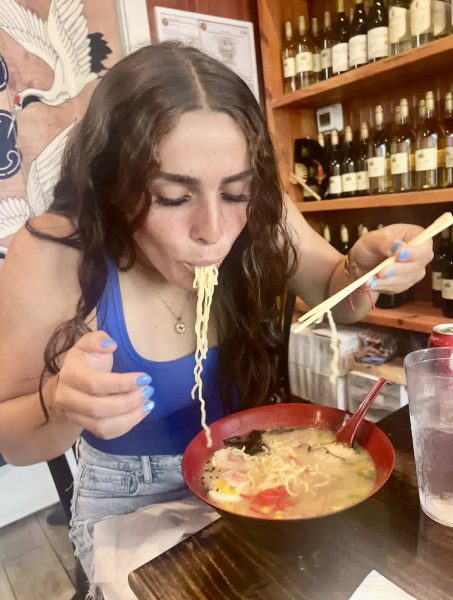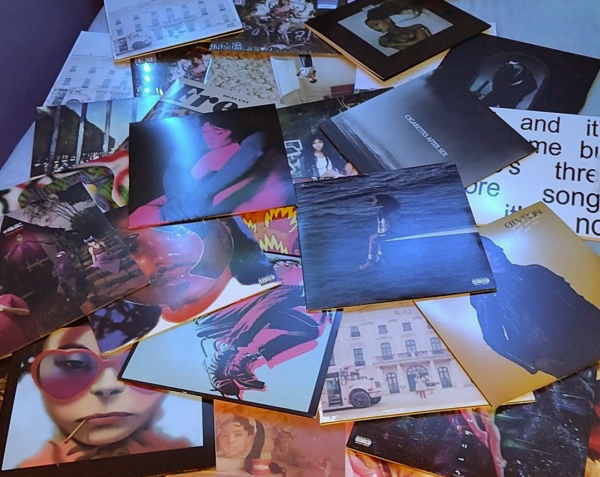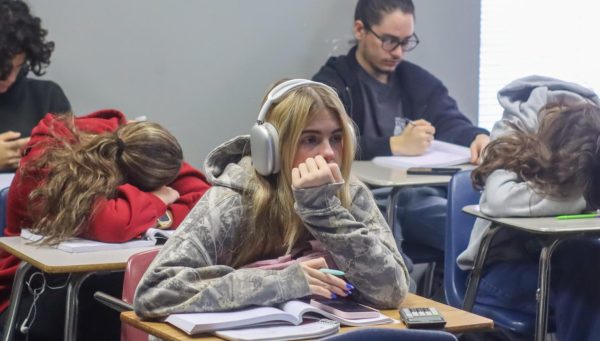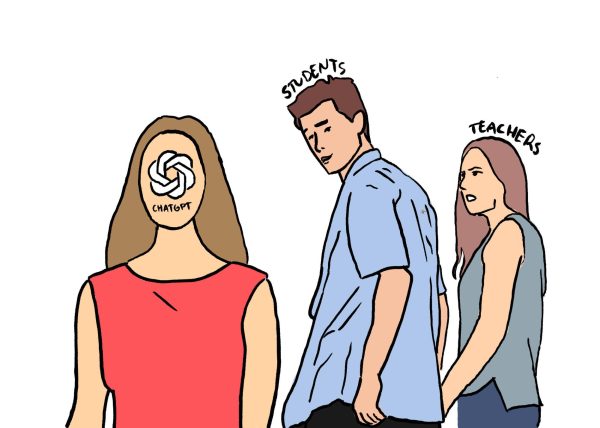Experimenting with excellence
Eight students present year-long projects at SCPS science fair

photo by Jeannie Williams
Neel Maity practices his presentation before the science fair. Five students from experimental science competed at the annual science fair.
A teen who can test coating on jet engine wires to prevent airplane explosions?
It might sound like a cool new sci-fi show, but Experimental Science students came up with this idea and several innovative others to compete in the county science fair on Saturday, Feb. 11.
The eight students presented their original projects at the Seminole Towne Center. These students worked several months with the hope of making it to state and eventually the international competition.
Results of the science fair will not be announced until Feb. 21, but teacher Sarah Evans is confident that her students will do well. Last year, two of Evans’ students went to the international stage of the competition.
“My favorite part is seeing their progress, analyzing the data, then finding something cool that no one has ever found before,” Evans said. “These are high school students that are doing projects on the graduate level, which I find amazing.”
Since the beginning of the year, the class has been perfecting every aspect of their projects. Each one begins with an idea, which is then formed into a testable question. All ideas had to be approved by November and then re-approved in January.
Evans guided her students with the process of creating a question, but the ideas came from the students.
Senior Salim Mouloua wondered if there was a correlation between the comprehension skills and hand-based activities of left-handed and right-handed people.
Senior Samantha Bates saw research from MIT about carbon nanotubes, a relatively new discovery of carbon atoms linked in hexagonal shapes.
“I’m a major marine biology and microbiology freak, and I was searching some articles and I found that carbon nanotubes are a new thing and the effects on organisms isn’t known,” Bates said.
Bates added nanotubes to algae and observed the cellular respiration and photosynthesis rates to see if the fitness of the organisms increased.
Students then had to come up with a hypothesis and complete a literature review, pulling information from college databases related to their field. The final part of the research plan was background research, and the main purpose of the experimental science class was the completion of the plan.
Freshman Neel Maity learned about a May 2016 plane crash in the Mediterranean which resulted from the poor coating of the wires in the jet engine, and the overheating caused an explosion.
“I wanted to see what research was done on it, and I couldn’t really find anywhere where they tried to predict the condition of this ahead of time,” Maity said.
Sophomore Reagan Pomp did extensive research for her project on plant-based sunscreen, and she found that plants make a natural protectant against the sun.
“Skin diseases have affected people I know, and I wanted to make a natural ingredient sunscreen,” Pomp said.
When students developed a testable hypothesis, Evans reviewed basic science terminology, like independent and dependent variables, so they could begin experimenting. Using these skills, Mouloua and senior Samuel Naranjo did their psychological experiments at UCF where they used college students as their participants.
Naranjo tested if people would change their moral inclination if the majority of people chose the opposite answer. He surveyed people to understand their identity development. He gave another survey to determine their moral inclination so Naranjo could see what bipolar morality, like religious and secular, the people fell under. Participants were given a false scenario that said the majority of people put the opposite responses.
“I was studying psychology over the summer and I was looking at these experiments on conformity like the Solomon Asch experiment, and I was thinking how far could I go,” Naranjo said.
The final step of the science fair process is to create a display with the results of the project and all of the data collected. Students also had to write and memorize a short explanation about their project which they recited to the judges.
Other than approving the research, Evans helped the students with talking in front of people, making their poster and presenting their data. The rest was done individually.
After seven months, the experimental class will finish the year visiting the physics department at Rollins and seeing different labs at UCF. Students will also write new proposals for future projects.
“This class lets me learn new things about the world,” Bates said.
Your donation will support the student journalists of Hagerty High School. Your contribution helps us publish six issues of the BluePrint and cover our annual website hosting costs. Thank you so much!








